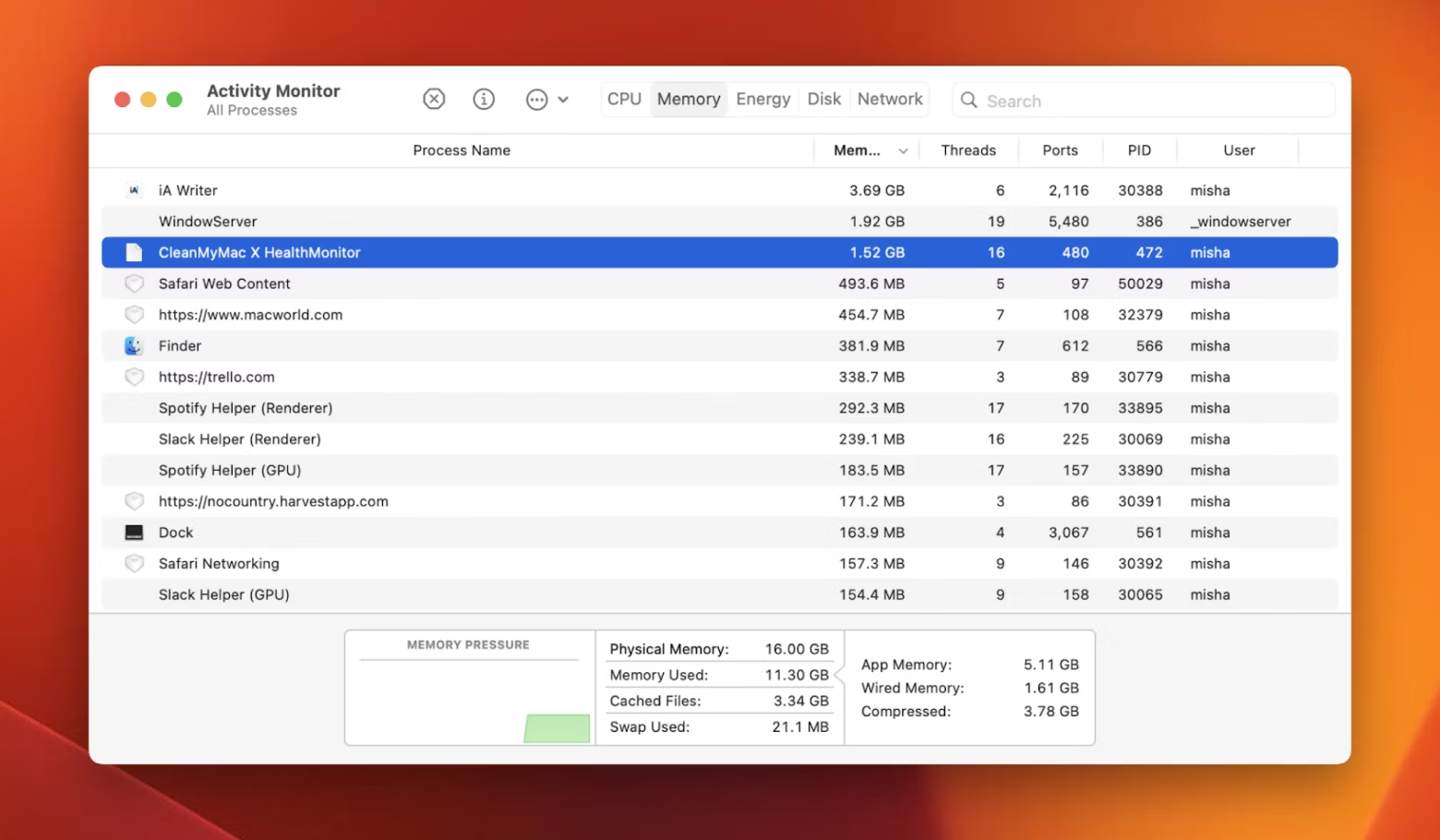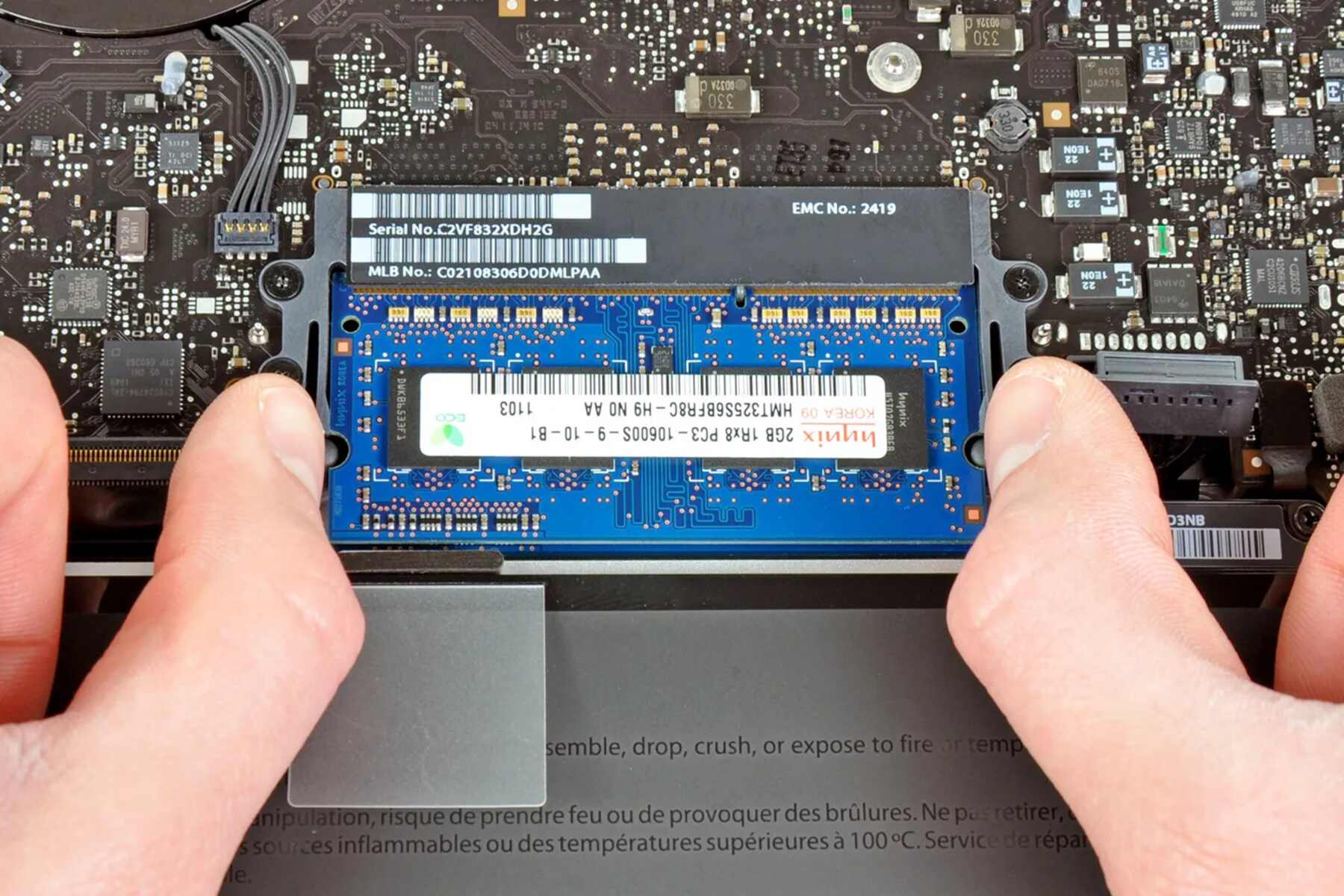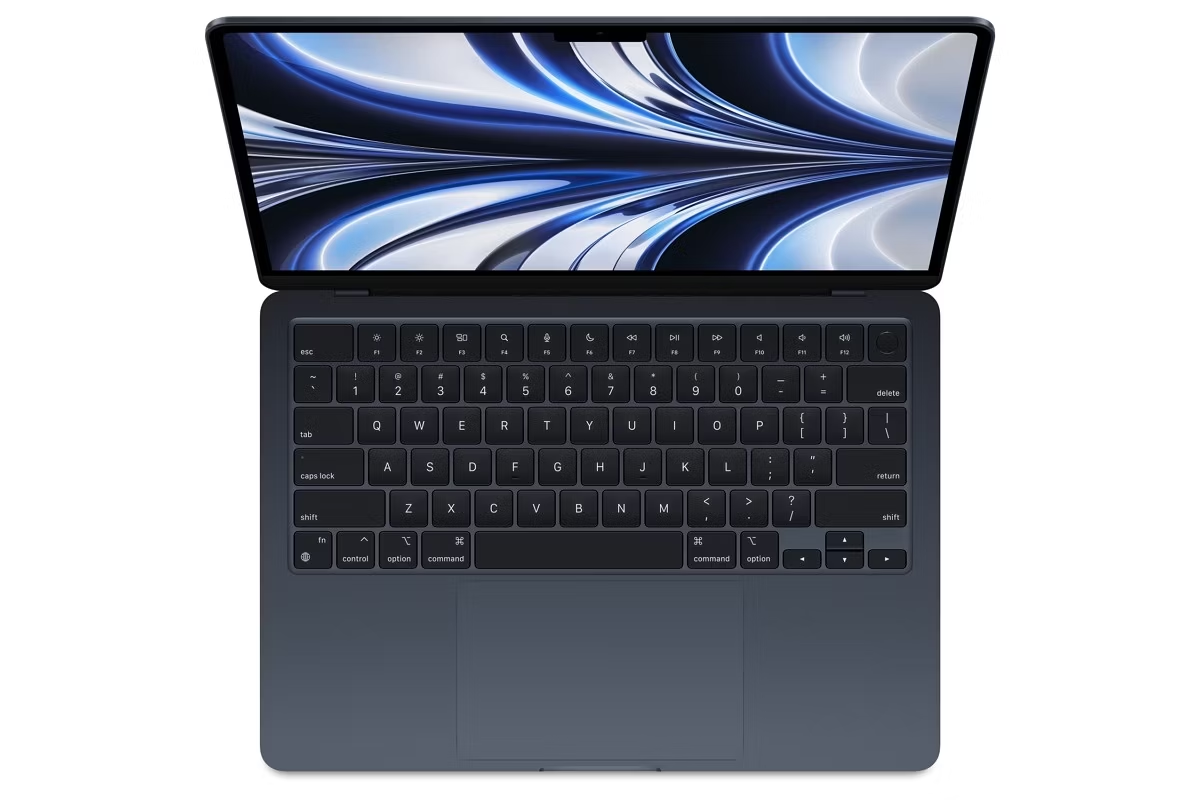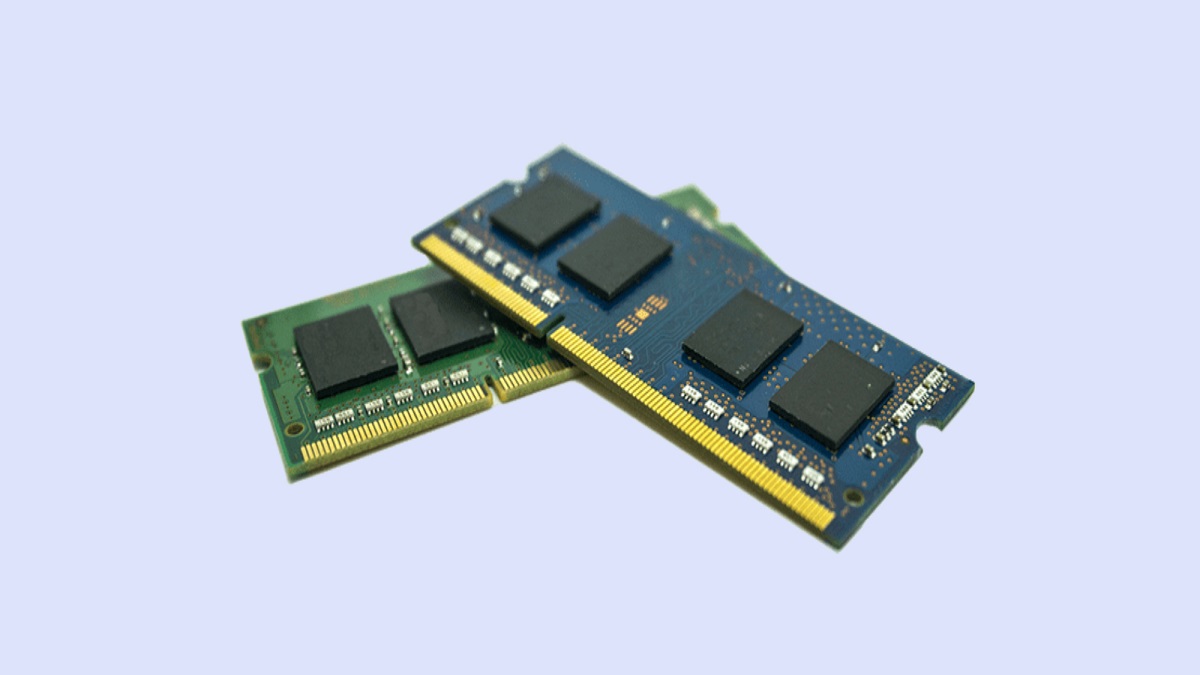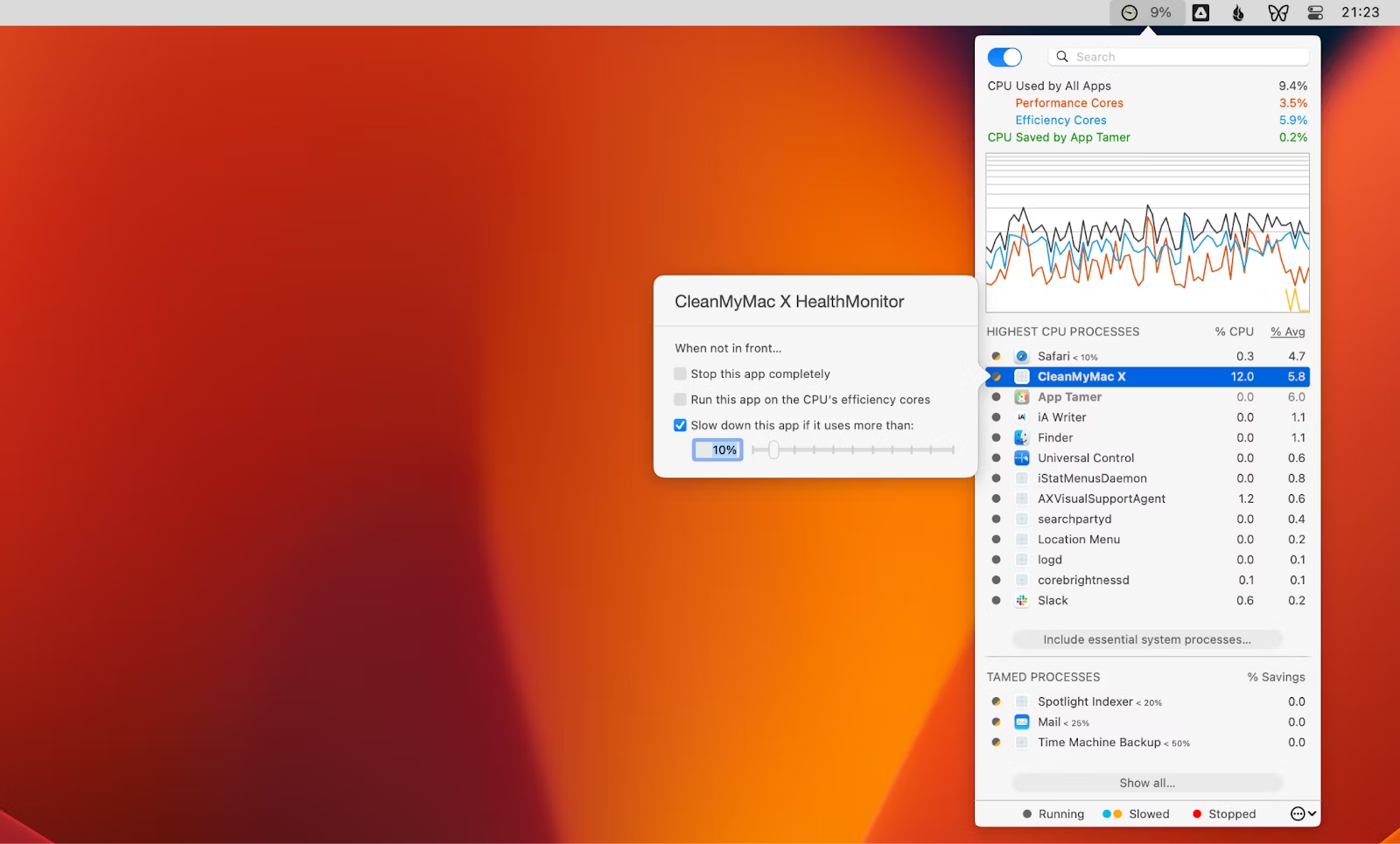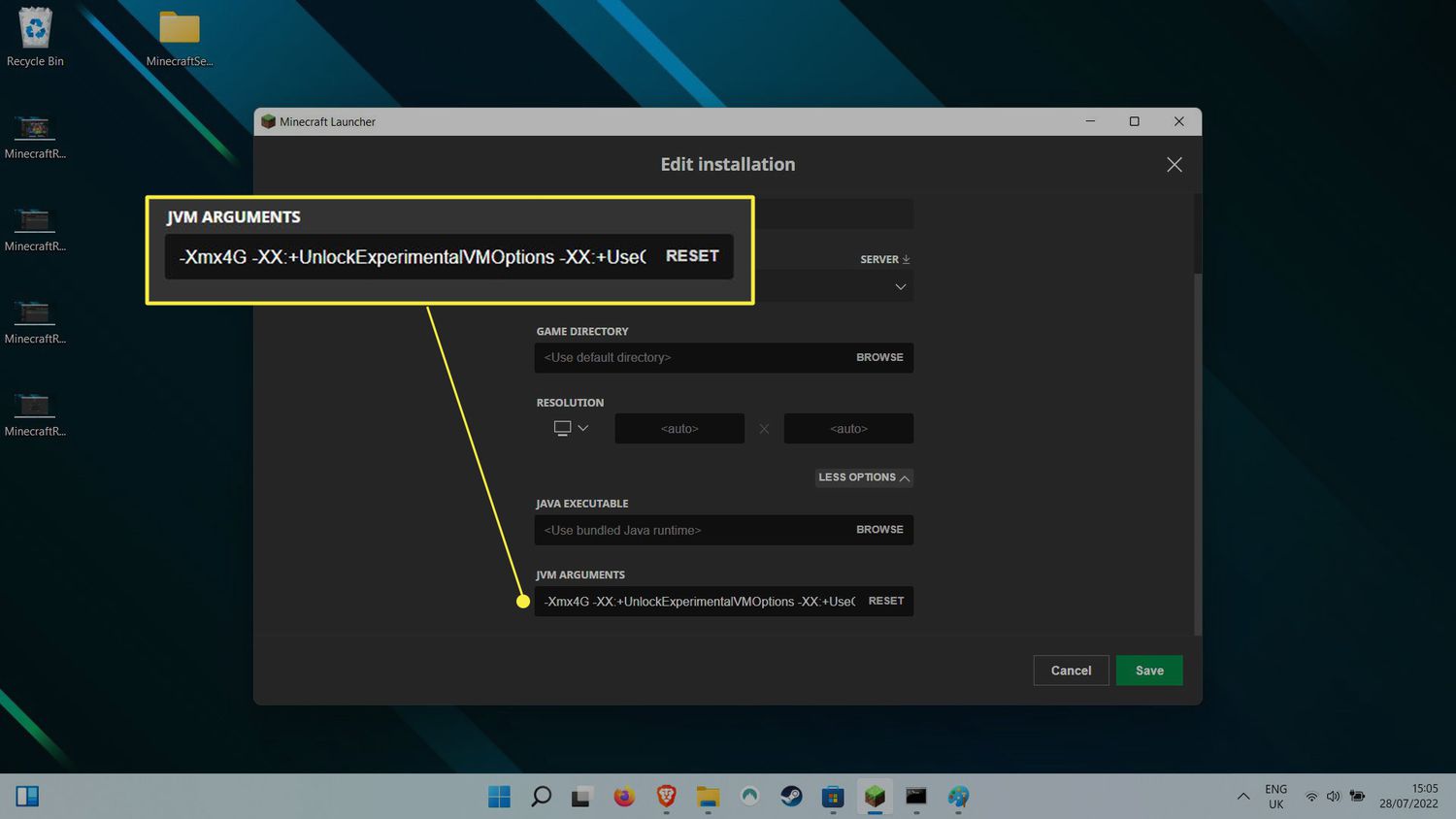Introduction
When using a Mac, it can be frustrating to experience sluggish performance due to high RAM usage. Random Access Memory (RAM) plays a vital role in the smooth operation of your device, as it temporarily stores data that the processor needs to access quickly. When your Mac’s RAM usage is consistently high, it can lead to reduced speed, freezing, or even crashing of applications.
Fortunately, there are several effective methods to lower RAM usage on your Mac and optimize its performance. By implementing these techniques, you can ensure that your Mac runs smoothly and efficiently.
In this article, we will explore ten practical tips to help you lower RAM usage on your Mac. These tips include closing unnecessary applications, disabling startup programs, removing unnecessary browser extensions, clearing cache and temporary files, adjusting visual effects, using Activity Monitor to identify high-usage processes, updating macOS and applications, increasing virtual memory, scanning for malware and viruses, and upgrading RAM if necessary.
By following these steps, you can effectively manage your Mac’s RAM usage and enhance its overall performance. Let’s dive into each method in detail and discover how you can optimize your Mac’s RAM usage.
Close Unnecessary Applications
One of the simplest ways to lower RAM usage on your Mac is to close any unnecessary applications running in the background. Many times, we tend to keep multiple applications open simultaneously, even when we’re not actively using them. These idle applications continue to consume valuable RAM, leading to high memory usage and decreased performance.
To optimize your Mac’s RAM usage, start by closing any applications that you’re not currently using. You can do this by navigating to the application’s window and clicking on the “X” button in the top-left corner or by right-clicking on the application icon in the Dock and selecting “Quit.”
It’s also worth checking for any hidden background applications that may be running without your knowledge. Some applications have features or processes that continue to operate even when the main application is closed. To identify and close these hidden background applications, follow these steps:
- Click on the Apple menu in the top-left corner of the screen and select “System Preferences.”
- Choose “Users & Groups.”
- Select your user account and click on the “Login Items” tab.
- You will see a list of applications that automatically launch when you log in. Remove any unnecessary applications from the list by selecting them and clicking on the “-” button below the list.
By closing unnecessary applications and removing unwanted startup programs, you can significantly improve your Mac’s RAM usage. This will free up memory for the applications you’re actively using, resulting in smoother performance and faster response times.
Disable Startup Programs
Another way to reduce RAM usage on your Mac is by disabling unnecessary startup programs. When you start your Mac, certain applications may automatically launch and run in the background, consuming valuable RAM resources. By disabling these startup programs, you can free up memory and improve overall system performance.
To disable startup programs on your Mac, follow these steps:
- Click on the Apple menu in the top-left corner of the screen and select “System Preferences.”
- Choose “Users & Groups.”
- Select your user account and click on the “Login Items” tab.
- You will see a list of applications that automatically launch when you log in. Uncheck the box next to any unnecessary applications to prevent them from starting up.
It’s important to note that not all applications listed in the Startup Programs section are essential for your Mac’s operation. Some applications, such as messaging services or cloud storage clients, may automatically enable themselves to provide a seamless user experience. However, if you notice any non-essential applications in the list, disabling them can help conserve valuable RAM.
Disabling unnecessary startup programs can have a significant impact on your Mac’s RAM usage, as it prevents these programs from running in the background and using up memory resources. By reducing the number of applications that load at startup, you can allocate more RAM to the applications you actively use, resulting in improved performance and faster operation.
Remove Unnecessary Browser Extensions
If you’re experiencing high RAM usage on your Mac, one culprit could be unnecessary browser extensions. Browser extensions are add-ons that provide additional functionalities and features to your web browser. While they can be useful, having too many extensions installed can strain your Mac’s resources, including RAM.
Start by examining the browser extensions you have installed and determine which ones are truly necessary. Some extensions may have been installed unintentionally or are no longer in use. These unused extensions can consume a significant amount of memory, leading to increased RAM usage.
To remove unnecessary browser extensions on popular web browsers like Safari, Google Chrome, or Mozilla Firefox, follow these steps:
- Open your web browser.
- Click on the menu icon (three horizontal lines or vertical dots) in the top-right corner of the browser window.
- Select “Preferences” or “Settings” from the drop-down menu.
- Navigate to the “Extensions” or “Add-ons” section.
- You will see a list of installed extensions. Review the list and identify any extensions you no longer need.
- Click on the “Remove” or “Delete” button next to each unnecessary extension to uninstall it.
Removing unnecessary browser extensions can help reduce memory usage, allowing your web browser to run more efficiently. It’s a good practice to only keep the extensions that you use regularly and remove the ones that are taking up valuable resources without providing any necessary functionality.
By optimizing your browser’s extensions and removing any unnecessary ones, you can lower RAM usage on your Mac, resulting in improved browsing speed and overall system performance.
Clear Cache and Temporary Files
Cache and temporary files accumulate over time as you browse the internet and use various applications on your Mac. These files are stored to help speed up the loading of websites and applications in the future. However, they can also contribute to high RAM usage if they are not regularly cleared.
Clearing cache and temporary files can not only free up disk space but also help reduce memory usage on your Mac. To clear cache and temporary files, follow these steps:
- Open Finder and click on the “Go” menu in the menu bar.
- Press and hold the “Option” key on your keyboard to reveal the “Library” option.
- Click on “Library” to open it.
- Navigate to the “Caches” folder and delete the contents inside.
- Go back to the “Library” folder and open the “Preferences” folder.
- Look for files that begin with “com.apple” or are related to specific applications, and delete them.
Additionally, you can clear cache and temporary files in specific applications. For web browsers such as Safari, Google Chrome, or Mozilla Firefox, you can access the clear cache option through the browser’s settings or preferences menu.
By regularly clearing cache and temporary files, you can reclaim valuable disk space and reduce RAM usage on your Mac. This can result in improved overall system performance and faster response times for both web browsing and application usage.
Adjust Visual Effects
The visual effects on your Mac, such as animations, transparency, and motion effects, can add aesthetic appeal to your user interface. However, these visual effects require system resources, including RAM, to function smoothly. If you’re experiencing high RAM usage, adjusting or disabling certain visual effects can help free up memory and improve overall performance.
To adjust visual effects on your Mac, follow these steps:
- Click on the Apple menu in the top-left corner of the screen and select “System Preferences.”
- Choose “Accessibility.”
- Select “Display” from the left sidebar.
- Tick the box next to “Reduce motion” to disable animations and motion effects.
- Tick the box next to “Increase contrast” to reduce transparency and increase visibility.
By disabling or reducing visual effects, you can optimize your Mac’s RAM usage. This allows the system to allocate resources more efficiently, resulting in smoother performance and a faster, more responsive user experience.
It’s worth noting that adjusting visual effects is a matter of personal preference. If you enjoy the visual appeal they provide, you can experiment with different settings to find a balance between aesthetics and system performance.
By making adjustments to visual effects, you can effectively lower RAM usage on your Mac, allowing for improved efficiency and a more efficient use of system resources.
Use Activity Monitor to Identify High-Usage Processes
Activity Monitor is a built-in utility on Mac that allows you to monitor the usage of system resources, including CPU, RAM, and disk usage. By using Activity Monitor, you can identify processes or applications that are consuming a significant amount of RAM and take appropriate actions to optimize your Mac’s performance.
To use Activity Monitor to identify high-usage processes on your Mac, follow these steps:
- Open the “Applications” folder, then go to the “Utilities” folder.
- Double-click on “Activity Monitor” to open the utility.
- Click on the “Memory” tab to sort the processes by RAM usage, with the highest consumers at the top.
- Review the list of processes and identify any applications or processes that are using a substantial amount of RAM.
- If you notice any unnecessary or resource-intensive processes, you can quit them by selecting the process and clicking on the “X” button in the toolbar.
By using Activity Monitor, you can gain valuable insights into which applications or processes are consuming the most RAM on your Mac. This information can help you identify potential memory hogs and take appropriate actions, such as closing resource-intensive applications or finding alternatives with lower memory usage.
Regularly monitoring and managing the high-usage processes identified in Activity Monitor can help optimize your Mac’s RAM usage and improve overall system performance. By allocating memory resources more efficiently, you can ensure that your Mac runs smoothly and efficiently, even when dealing with demanding tasks or applications.
Update macOS and Applications
Regularly updating macOS and your installed applications is crucial for maintaining the optimal performance of your Mac. Software updates often include bug fixes, security patches, and performance enhancements that can help improve overall system stability and efficiency, including RAM usage.
To update macOS, follow these steps:
- Click on the Apple menu in the top-left corner of the screen and select “System Preferences.”
- Choose “Software Update.”
- If there are any available updates, click on the “Update Now” button and follow the on-screen instructions to install them.
For updating applications, you can typically do so through the respective application’s update function. Most applications have a built-in mechanism to check for updates automatically or manually.
Keeping your macOS and applications up to date ensures that you have the latest optimizations and bug fixes, which can greatly contribute to reducing RAM usage on your Mac. Developers continually refine their software to improve performance and efficiency, so updating regularly ensures that you are running the most optimized and stable versions.
It is recommended to enable automatic updates whenever possible so that your Mac and applications stay up to date without requiring manual intervention. This helps to ensure that you benefit from the latest performance improvements and security enhancements.
By staying vigilant about updating macOS and your applications, you can reduce the risk of performance issues caused by outdated software and optimize your Mac’s RAM usage.
Increase Virtual Memory
Virtual memory, also known as swap space, is a portion of your Mac’s hard drive that is used as supplementary memory when your RAM becomes full. Increasing the virtual memory allows your Mac to handle more tasks and applications, reducing the strain on your RAM and potentially lowering RAM usage.
To increase virtual memory on your Mac, follow these steps:
- Click on the Apple menu in the top-left corner of the screen and select “System Preferences.”
- Choose “Security & Privacy.”
- Select the “Privacy” tab, then click on “Full Disk Access” in the left sidebar.
- Click on the lock icon in the bottom-left corner and enter your administrator password.
- Check the box next to “Terminal” in the list of applications.
- Open the “Terminal” application from the “Utilities” folder.
- Type the following command and press Enter:
sudo nano /private/var/vm/swapfile - Enter your administrator password when prompted.
- In the nano editor, delete the existing values and modify them to increase the virtual memory size. For example, you can change the value to “1024” for 1GB of virtual memory.
- Press Ctrl+O to save the changes, then Ctrl+X to exit the nano editor.
- Restart your Mac for the changes to take effect.
Note: Modifying virtual memory settings should be performed with caution. You should only increase the virtual memory as needed, and it is recommended to consult with a knowledgeable professional if you are unsure about the appropriate values.
By increasing the virtual memory on your Mac, you provide additional space for temporary data storage when your RAM reaches its limit. This can help prevent excessive RAM usage and improve the overall performance of your Mac, particularly when running memory-intensive tasks or applications.
Scan for Malware and Viruses
Malware and viruses can not only pose security risks to your Mac but also impact its performance, including RAM usage. These malicious programs can run in the background, consuming valuable system resources and leading to increased memory usage.
It is important to regularly scan your Mac for malware and viruses to identify and remove any malicious software that may be affecting its performance. There are several antivirus and antimalware software options available for Mac, many of which offer real-time protection and regular scanning capabilities.
To scan for malware and viruses on your Mac, consider following these steps:
- Ensure that your operating system and antivirus software are up to date.
- Open your antivirus software and initiate a full system scan. The scanning process may take some time, depending on the size of your hard drive and the number of files to be scanned.
- If any malware or viruses are detected, follow the instructions provided by the antivirus software to remove them.
It is recommended to run regular scans for malware and viruses on your Mac, even if you do not suspect any issues. This proactive approach helps ensure that your system remains protected and free from any performance-hindering malicious software.
By regularly scanning your Mac for malware and viruses, you can address any potential security threats and minimize the impact on your Mac’s performance. Removing these harmful programs can alleviate strain on your RAM and improve overall system efficiency.
Upgrade RAM if Necessary
If you have tried various methods to lower RAM usage on your Mac but are still experiencing performance issues, it may be time to consider upgrading your RAM. Increasing the amount of RAM in your Mac can significantly improve its performance, allowing you to run more applications simultaneously without excessive memory usage.
Before upgrading your RAM, it’s important to determine the type and maximum capacity supported by your Mac. You can usually find this information on the Apple website or by consulting the user manual for your specific Mac model.
Once you have determined the compatible RAM specifications, you can purchase the appropriate RAM modules from authorized retailers or online vendors. Keep in mind that Macs often require specific types of RAM, so it’s important to ensure compatibility.
When upgrading your RAM, follow these steps:
- Power off your Mac and disconnect any cables.
- Locate the RAM slots on your Mac. These are typically accessible by removing a panel on the back or underneath the device.
- Carefully insert the new RAM modules into the empty slots, ensuring they are firmly seated and properly aligned.
- Replace the panel or cover, then reconnect any cables.
- Power on your Mac and verify that the new RAM is recognized by checking the system information.
Upgrading your RAM can have a significant impact on lowering RAM usage and improving overall performance. With additional memory, your Mac will be able to handle more demanding tasks and applications, resulting in smoother multitasking and increased responsiveness.
Keep in mind that if you are not comfortable or familiar with the process of upgrading hardware, it may be best to consult a professional to ensure that the upgrade is done correctly.
By upgrading your RAM if necessary, you can effectively optimize your Mac’s memory usage and enjoy improved overall performance.
Conclusion
Optimizing RAM usage on your Mac is essential for maintaining its performance and ensuring a smooth user experience. By implementing the tips mentioned in this article, you can effectively lower RAM usage and improve overall system efficiency.
Closing unnecessary applications, disabling startup programs, removing unnecessary browser extensions, clearing cache and temporary files, adjusting visual effects, using Activity Monitor to identify high-usage processes, updating macOS and applications, increasing virtual memory if necessary, scanning for malware and viruses, and upgrading RAM are all practical steps you can take to optimize your Mac’s RAM usage.
It’s important to monitor your Mac’s performance and make adjustments accordingly. By removing unnecessary processes, clearing cache, and keeping your software up to date, you can ensure that your Mac operates at its best.
Remember that every Mac is different, and the optimal configuration may vary depending on your specific needs and usage patterns. It’s worth experimenting with different techniques to find the most suitable combination for your situation.
By effectively managing your Mac’s RAM usage, you can enjoy a faster and more responsive system, allowing you to work more efficiently and make the most of your device’s capabilities.
Take the necessary steps outlined in this article and start optimizing your Mac’s RAM usage today for a smoother and more enjoyable computing experience.







